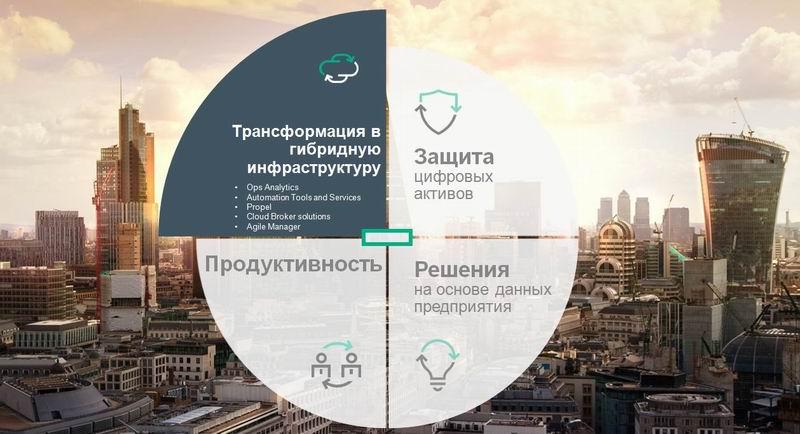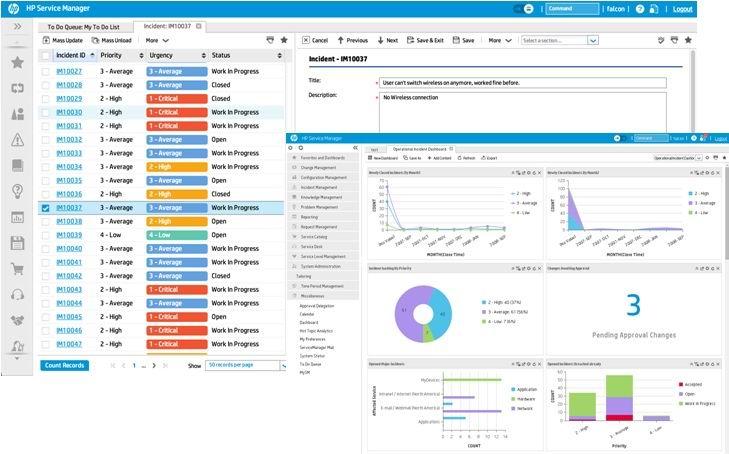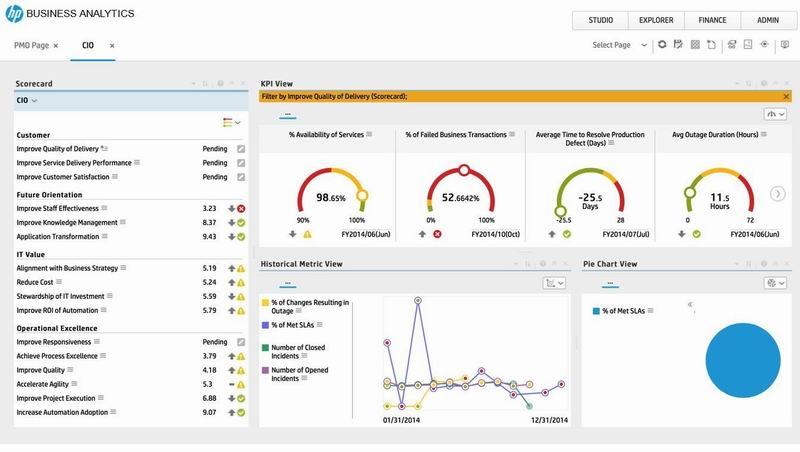Hybrid Transformation: Human Face IT Services
One of the first problems that a modern digital transformation company has to face is a change in its IT infrastructure. In an effort to obtain economic benefits and meet the requirements of the business, it will have to learn to exist in a hybrid infrastructure, realizing some services through its IT department, and acquiring others from the outside.

Cloud technologies appeared in the corporate environment due to the simple desire of enterprises to get the services they need quickly and with minimal additional costs. However, it soon became clear that it was impossible to transfer all services to the provider: there were a lot of issues related to data security and compliance with regulatory requirements. It became obvious that in most cases the optimal approach is to mix consumption of both internal and external services. Nevertheless, cloud services are already firmly entrenched in corporate IT, and for enterprises, the possibility of unified, consolidated management of hybrid environments is becoming increasingly important.
Indeed, the migration of applications to the cloud offers advantages in the form of flexibility and cost reduction, but at the same time it complicates the IT landscape, since some of the applications are still inside the enterprise. Difficulties in the work of IT departments have increased significantly: getting end-to-end visibility of services in complex environments was not so easy.
')

Moreover, the impact of cloud computing extends beyond the IT departments, encompassing many business challenges. Therefore, today, more than ever, the responsibility of a CIO, who has to coordinate many architectures and ensure efficient use of cloud solutions throughout the company, is increasing. Thus, the very emergence of a hybrid model not only transforms the IT architecture, but also leads to a change in the role of IT.
IDC notes that many IT departments are not ready to work in this mode and therefore do not have time to respond to requests from business units: according to the research, almost half of IT directors are not able to establish effective interaction with them, which is confirmed by our practice. Business representatives have a lot of complaints about corporate IT. They will think twice whether it makes sense to involve the resources of their organization to create the services they need, when it is much easier to get them from the outside.
In any case, the IT of large enterprises are on the verge of big changes. Transformation is extremely important for them, everyone will have to go through this path, and there are many difficulties ahead. However, we are ready to provide effective assistance to our customers.

What challenges await us on the road to transformation? The first and most obvious: before you change something, you need to realize your current state. Often, people do not understand what is happening in their IT industry, and this causes many problems. They just do not know where to start, how to approach the solution of the problem.
It is necessary not only to have information about the types of equipment distributed in different locations, but to see the actual picture: how the elements of the infrastructure are interconnected, where they are, what IT service relies on which elements. The modern IT landscape is rather complex and dynamic, therefore, to ensure the relevance of information is not easy. Means of automation come to the rescue, which make it possible to obtain the necessary information with the least effort. In addition, the process component is also important - the configuration management process should be built.

Having received a picture of the bottom layer of IT, we will want to understand how this picture is linked to the business strategy - IT should not exist in isolation from the business. We will need to determine which services are more profitable to give to the external cloud, which applications to host in the internal and what to leave in the current state, on the physical infrastructure. To do this, it is necessary to find out what the business is interested in, how its requests are implemented as part of IT initiatives, and in addition, it is necessary to identify those infrastructure elements that are used to solve these tasks.
To understand how this transformation will look and what it consists of, we must link all initiatives with business objectives. You need a solution that allows you to manage IT transformations by comparing the overall IT landscape with business goals. This problem is solved with the help of systems management architecture of the enterprise (Enterprise Architecture).
Such solutions provide an opportunity to answer various questions, including the cost of owning IT services and their proper organization. They allow you to determine which services are extremely costly, after which you can either get rid of them completely or transfer them by optimizing the cost.
It must be admitted that from the point of view of enterprise architecture management, the Russian market can be called very immature. Most companies stop at the level of application architecture, and not many people succeed in reaching the level of enterprise management, linking IT with business and financial performance.

When we understand where we are going, what transformations are needed, and drew a "roadmap" of IT development, the issue of capacity management becomes relevant. After establishing order in the infrastructure, linking it with the business strategy and the logic of providing services, you should select resources to support these services and evaluate how effectively existing ones are used: whether some services can be connected to underused servers, whether there is enough space in the storage system. In addition, there is often a situation when virtual machines created for specific needs are “lost”, continuing to take up computing power and disk space.
It is equally important to predict the need for resources in the coming months. In this case, we are talking not only about the internal virtual infrastructure, but also about the physical and external cloud. Tools that implement this task automatically allow you to play what-if scenarios: what will happen when you move services, what it will affect, how it will help optimize resource loading.

Having understood what the resource picture looks like, one can speak about the key, central moment of transformation - the construction of clouds. This can be done only with the help of fully automating the processes of providing IT services, which allows you to fulfill needs quickly, not too expensive, and without hiring additional staff. It allows you to cover all tasks, starting from the lower level and ending with complex technological processes, when a virtual machine is created by pressing one button, software is installed on it, space is allocated in disk space, etc. Without such automation, IT transformation will not be complete.
Finally, the entire infrastructure will have to be controlled, as the IT department is required to perform SLAs, providing services with a given level of quality. It is quite obvious that in such a landscape it is impossible to manually track all events and emerging trends. A single information panel is needed, allowing you to see the current state of the services, both internal and external. Here you can analyze machine data and events, presenting them in terms of the impact on services. This helps to anticipate crisis situations and take certain actions in advance to prevent real incidents.
In order to remain in demand, a modern IT manager needs to think right now how to provide a given level of service with a minimum of costs. Of course, it is not necessary for him to thoroughly understand the state of each service; specially designated employees are responsible for this. His task is to monitor the implementation of KPI indicators assigned to the IT department. The necessary means to track such information - they collect it from various sources and accumulate it in a single view.
In fact, we endow the built infrastructure with the intellectual component, - its “brain”. A variety of data sources can be connected to this control level, including solutions from other suppliers.

The last step, but not least, should be the establishment of a friendly format for the interaction of IT services with business users. It can be stated that our Russian customers are finally beginning to be interested in the convenience of employees, their “happiness”.
As it is known, the user doesn’t care how the services are provided - he needs convenience and simplicity, contributing to the effective execution of tasks. In order for the hybrid infrastructure to function normally and not irritate the employees, it makes sense to think about the introduction of technologies that make it possible to use numerous service catalogs using a single access point and provide services in a uniform manner. Therefore, a centralized portal is extremely necessary, in which the user can easily order the service he needs.
IT service transformations play a central role in digital initiatives. Services should acquire a human face, becoming clear to any person and accessible for operational use, which will help increase the efficiency of any business.

Cloud technologies appeared in the corporate environment due to the simple desire of enterprises to get the services they need quickly and with minimal additional costs. However, it soon became clear that it was impossible to transfer all services to the provider: there were a lot of issues related to data security and compliance with regulatory requirements. It became obvious that in most cases the optimal approach is to mix consumption of both internal and external services. Nevertheless, cloud services are already firmly entrenched in corporate IT, and for enterprises, the possibility of unified, consolidated management of hybrid environments is becoming increasingly important.
Indeed, the migration of applications to the cloud offers advantages in the form of flexibility and cost reduction, but at the same time it complicates the IT landscape, since some of the applications are still inside the enterprise. Difficulties in the work of IT departments have increased significantly: getting end-to-end visibility of services in complex environments was not so easy.
')

Moreover, the impact of cloud computing extends beyond the IT departments, encompassing many business challenges. Therefore, today, more than ever, the responsibility of a CIO, who has to coordinate many architectures and ensure efficient use of cloud solutions throughout the company, is increasing. Thus, the very emergence of a hybrid model not only transforms the IT architecture, but also leads to a change in the role of IT.
IDC notes that many IT departments are not ready to work in this mode and therefore do not have time to respond to requests from business units: according to the research, almost half of IT directors are not able to establish effective interaction with them, which is confirmed by our practice. Business representatives have a lot of complaints about corporate IT. They will think twice whether it makes sense to involve the resources of their organization to create the services they need, when it is much easier to get them from the outside.
In any case, the IT of large enterprises are on the verge of big changes. Transformation is extremely important for them, everyone will have to go through this path, and there are many difficulties ahead. However, we are ready to provide effective assistance to our customers.

To clean up
What challenges await us on the road to transformation? The first and most obvious: before you change something, you need to realize your current state. Often, people do not understand what is happening in their IT industry, and this causes many problems. They just do not know where to start, how to approach the solution of the problem.
It is necessary not only to have information about the types of equipment distributed in different locations, but to see the actual picture: how the elements of the infrastructure are interconnected, where they are, what IT service relies on which elements. The modern IT landscape is rather complex and dynamic, therefore, to ensure the relevance of information is not easy. Means of automation come to the rescue, which make it possible to obtain the necessary information with the least effort. In addition, the process component is also important - the configuration management process should be built.

Link IT to business
Having received a picture of the bottom layer of IT, we will want to understand how this picture is linked to the business strategy - IT should not exist in isolation from the business. We will need to determine which services are more profitable to give to the external cloud, which applications to host in the internal and what to leave in the current state, on the physical infrastructure. To do this, it is necessary to find out what the business is interested in, how its requests are implemented as part of IT initiatives, and in addition, it is necessary to identify those infrastructure elements that are used to solve these tasks.
To understand how this transformation will look and what it consists of, we must link all initiatives with business objectives. You need a solution that allows you to manage IT transformations by comparing the overall IT landscape with business goals. This problem is solved with the help of systems management architecture of the enterprise (Enterprise Architecture).
Such solutions provide an opportunity to answer various questions, including the cost of owning IT services and their proper organization. They allow you to determine which services are extremely costly, after which you can either get rid of them completely or transfer them by optimizing the cost.
It must be admitted that from the point of view of enterprise architecture management, the Russian market can be called very immature. Most companies stop at the level of application architecture, and not many people succeed in reaching the level of enterprise management, linking IT with business and financial performance.

Provide management
When we understand where we are going, what transformations are needed, and drew a "roadmap" of IT development, the issue of capacity management becomes relevant. After establishing order in the infrastructure, linking it with the business strategy and the logic of providing services, you should select resources to support these services and evaluate how effectively existing ones are used: whether some services can be connected to underused servers, whether there is enough space in the storage system. In addition, there is often a situation when virtual machines created for specific needs are “lost”, continuing to take up computing power and disk space.
It is equally important to predict the need for resources in the coming months. In this case, we are talking not only about the internal virtual infrastructure, but also about the physical and external cloud. Tools that implement this task automatically allow you to play what-if scenarios: what will happen when you move services, what it will affect, how it will help optimize resource loading.

Control and monitoring
Having understood what the resource picture looks like, one can speak about the key, central moment of transformation - the construction of clouds. This can be done only with the help of fully automating the processes of providing IT services, which allows you to fulfill needs quickly, not too expensive, and without hiring additional staff. It allows you to cover all tasks, starting from the lower level and ending with complex technological processes, when a virtual machine is created by pressing one button, software is installed on it, space is allocated in disk space, etc. Without such automation, IT transformation will not be complete.
Finally, the entire infrastructure will have to be controlled, as the IT department is required to perform SLAs, providing services with a given level of quality. It is quite obvious that in such a landscape it is impossible to manually track all events and emerging trends. A single information panel is needed, allowing you to see the current state of the services, both internal and external. Here you can analyze machine data and events, presenting them in terms of the impact on services. This helps to anticipate crisis situations and take certain actions in advance to prevent real incidents.
In order to remain in demand, a modern IT manager needs to think right now how to provide a given level of service with a minimum of costs. Of course, it is not necessary for him to thoroughly understand the state of each service; specially designated employees are responsible for this. His task is to monitor the implementation of KPI indicators assigned to the IT department. The necessary means to track such information - they collect it from various sources and accumulate it in a single view.
In fact, we endow the built infrastructure with the intellectual component, - its “brain”. A variety of data sources can be connected to this control level, including solutions from other suppliers.

In contact with users
The last step, but not least, should be the establishment of a friendly format for the interaction of IT services with business users. It can be stated that our Russian customers are finally beginning to be interested in the convenience of employees, their “happiness”.
As it is known, the user doesn’t care how the services are provided - he needs convenience and simplicity, contributing to the effective execution of tasks. In order for the hybrid infrastructure to function normally and not irritate the employees, it makes sense to think about the introduction of technologies that make it possible to use numerous service catalogs using a single access point and provide services in a uniform manner. Therefore, a centralized portal is extremely necessary, in which the user can easily order the service he needs.
IT service transformations play a central role in digital initiatives. Services should acquire a human face, becoming clear to any person and accessible for operational use, which will help increase the efficiency of any business.
Source: https://habr.com/ru/post/299608/
All Articles